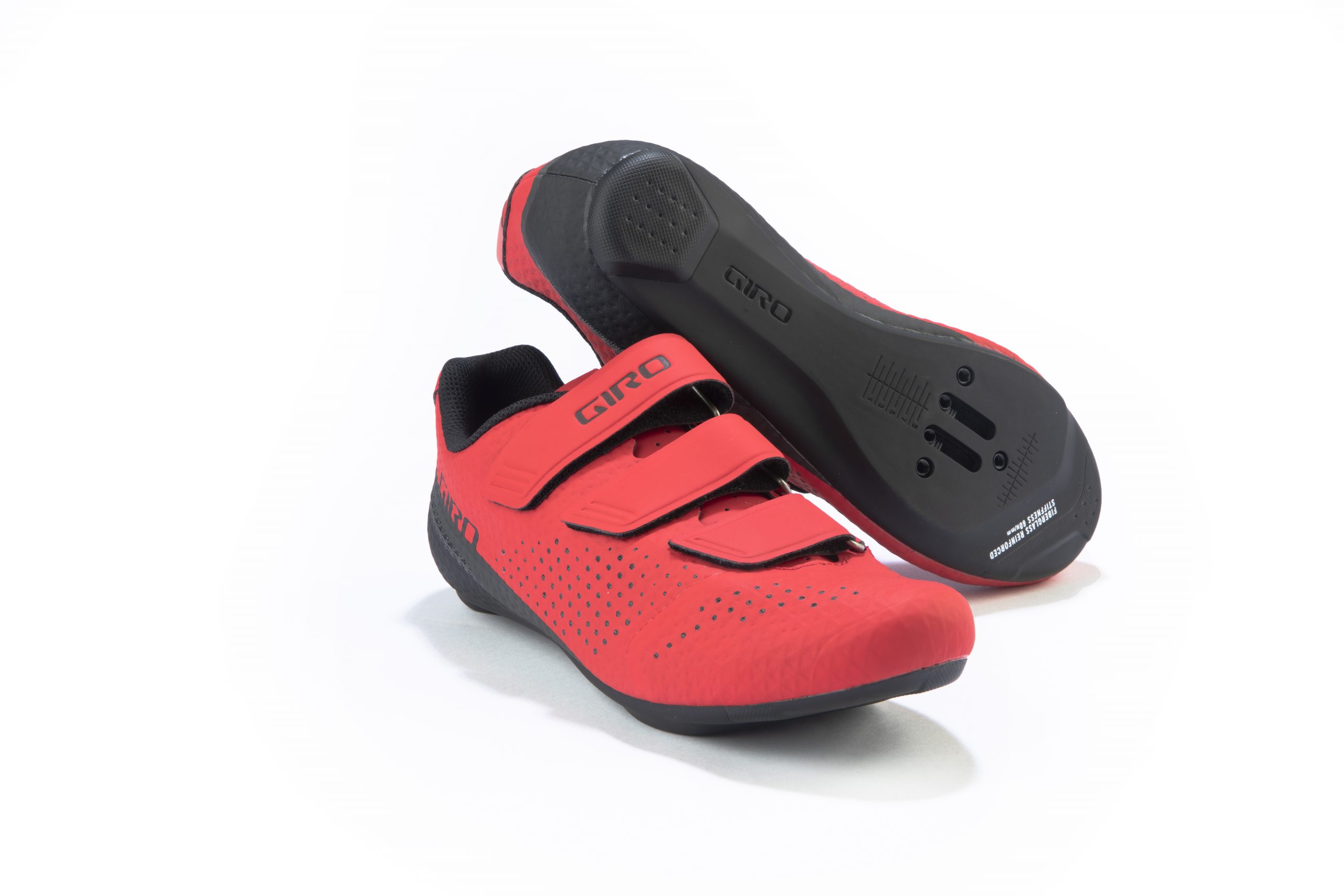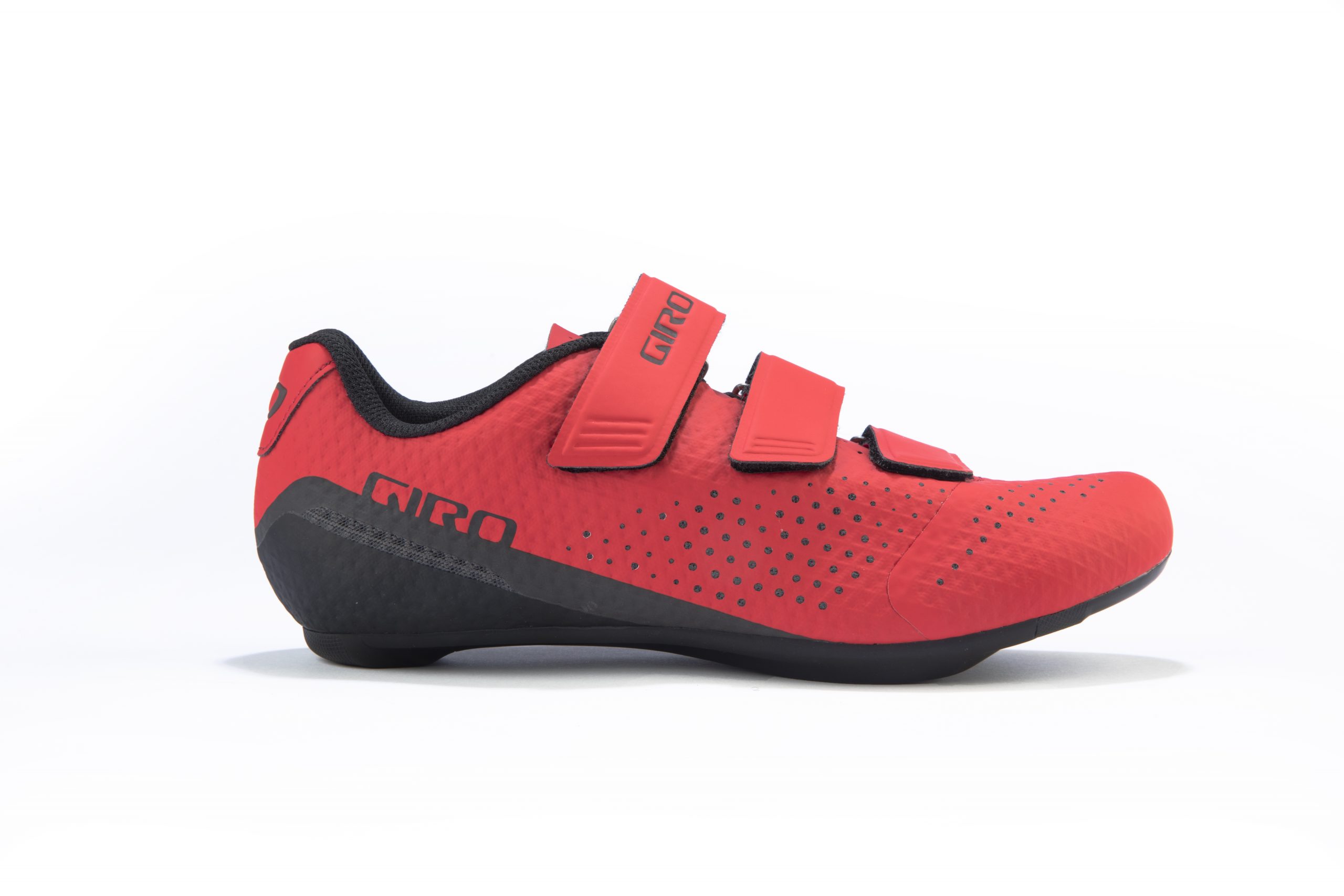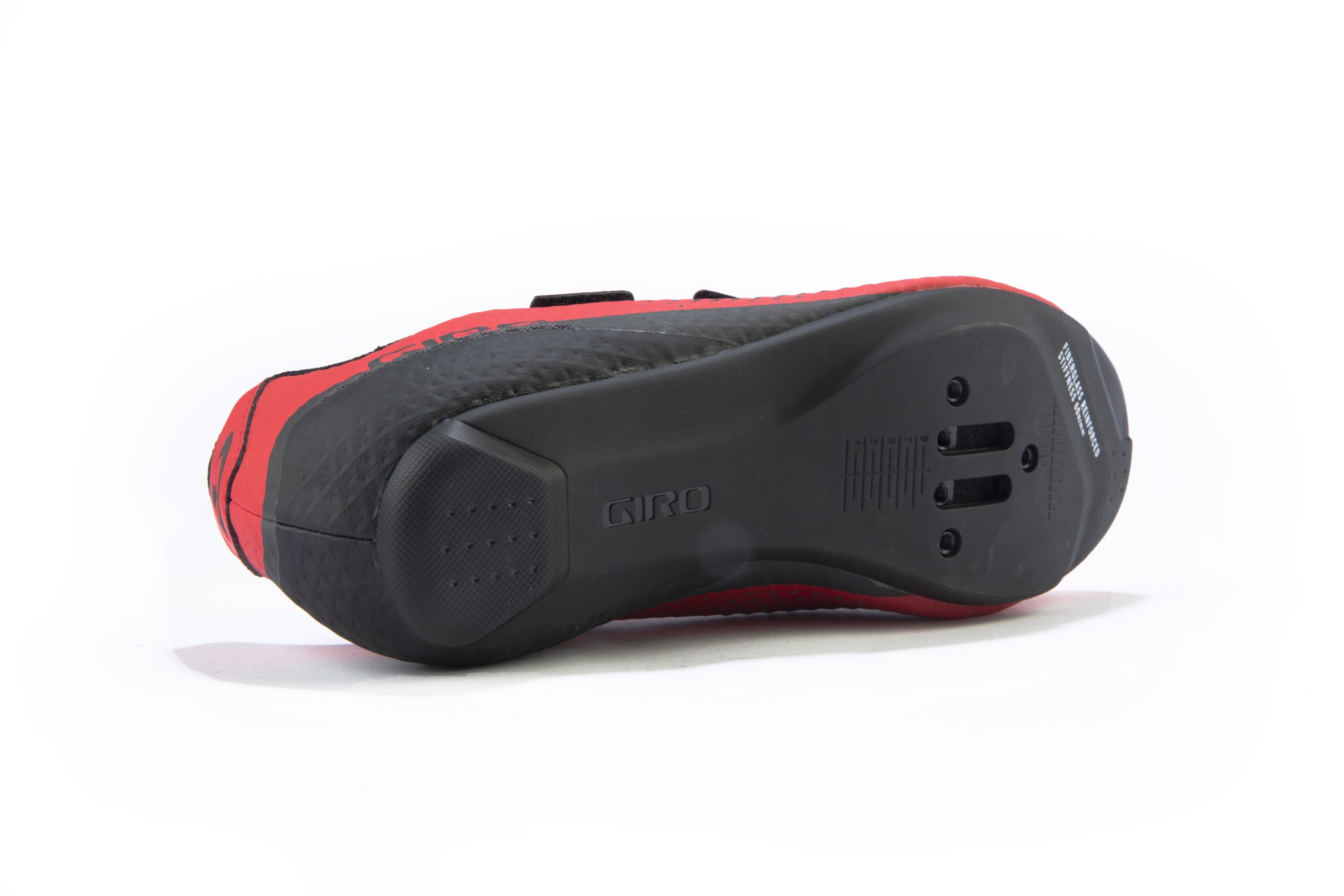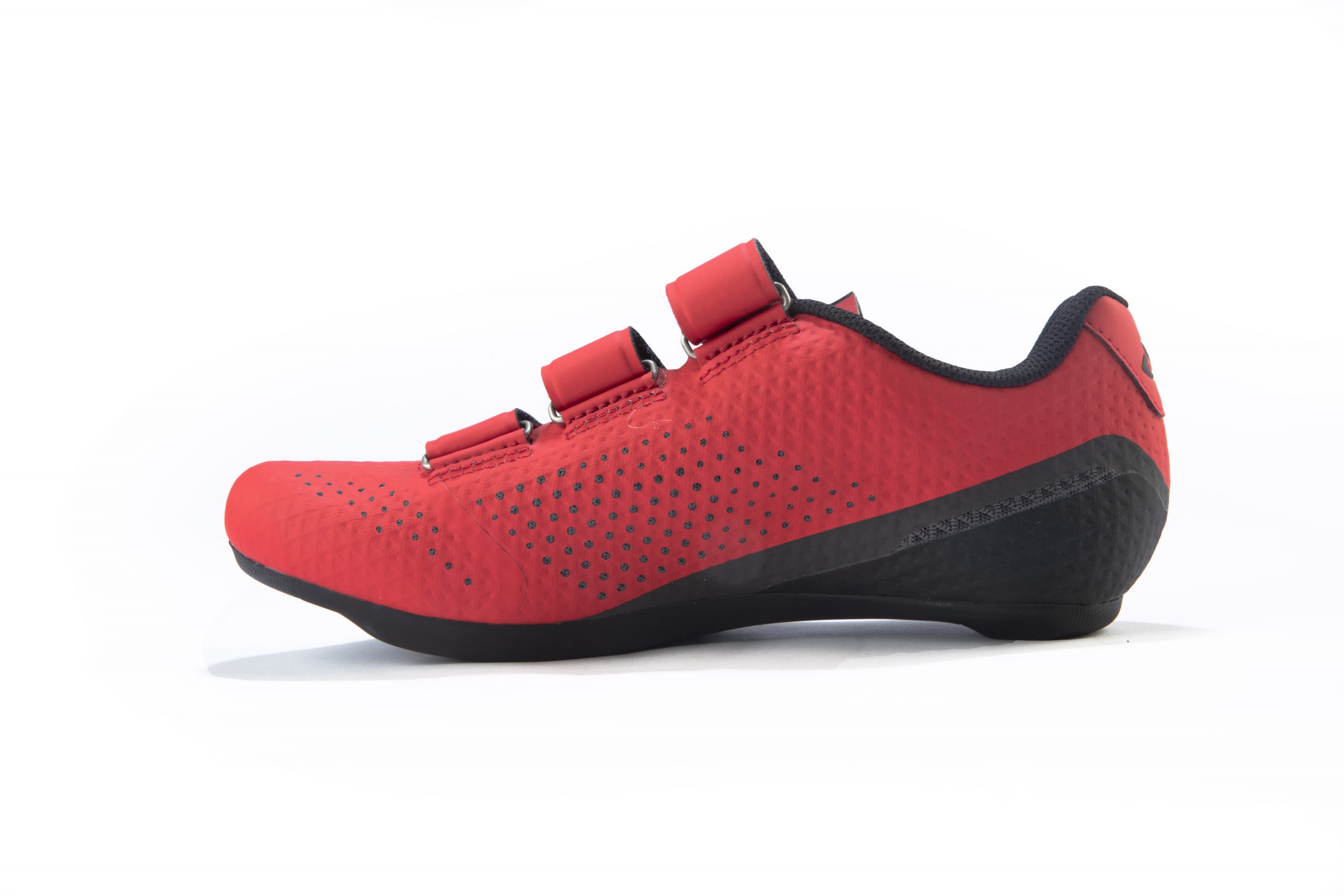Giro Stylus cycling shoes review
At £89 the Stylus shoes provide a sole that is stiff enough, but the upper could be improved

The Stylus shoe from Giro is compatible with two or three-bolt cleats and the nylon/fibre composite sole is sufficient for endurance rides. The upper provides plenty of structure but lacked flexibility and the location of the metal hook bothered me a little bit. This is a quality shoe for the price tag but there are more options on the market offering more premium features for less.
-
+
Sole is stiff enough for endurance
-
+
Reflective heel detail
-
+
Ventilation
-
-
Hook and loop creates pressure
-
-
Wider than expected
-
-
Heel slip
- -
- -
You can trust Cycling Weekly.

The Stylus cycling shoe from Giro is the brand's entry-level option - it aims to provide cyclists with a sole that is stiff enough to offer good power transfer, at a price point that represents a huge saving over the top flight creations that come in well in excess of £300.
The shoes will meet the requirements of most riders, though as we've found with nearly all of the five pairs of sub £100 shoes on test at Cycling Weekly, the lower price tag does bring with it some trade-offs in fit, and it wasn't out top choice at this price point.
Giro Stylus cycling shoes: construction
The Stylus uses Giro's "premium Synchwire single-layer upper" which the brand says conforms to the foot and provides "phenomenal structural support and ventilation."
The closure comes from three hook and loop straps, which utilise Velcro. The metal hooks sit on the inside of the shoe.

Laser perforation is present across the upper, and in a nod to visibility there is also a reflective heel tab. Reflective detailing on moving parts of the rider are more effective than those included on static elements - so this is particularly appreciated. The heel cup is molded and padded for comfort.
At the sole, Giro has opted for an injection-molded nylon and glass fiber composite, promising stiffness that won't match the carbon seen in the upper echelons of the range but will be a little less jarring over long rides. Comparing these shoes directly to the competition, the sole was stiffer than the Shimano RC3, which could be visibly bent by hand, but seemed to flex more than the Bontrager Starvos and Specialized Torch 1.0, the dhb Dorica uses a carbon sole and is the most rigid.
Inside the shoe is a footbed, but it's not shaped to offer arch support. As per other shoes at this price range, I'd suggest that if you have your own insoles designed to provide support for high or fallen arches then you'd be best off inserting these instead.
These shoes are compatible with two or three-bolt cleat systems, and there are markings on the sole to aid accurate and repeatable fitment. Compatibility with two-bolt systems sets these shoes apart from most and makes them a good commuter friendly option, or ideal for those who ride on mixed terrain with SPD shoes.

The claimed weight is 272g for a size 42, and our size 40 came in at 249g. Sizes start at 39 and extend to 50, for women there's the Stylus women's shoe with identical features, but using a women's last (an independent podiatrist has confirmed that there are notable volume differences between the average male and female foot), and in sizes 36-42.
Giro Stylus cycling shoes: the ride
Wriggling my foot into the shoe and closing the Velcro, it was immediately noticeable that these shoes provide more structure when compared to the Bontrager Starvos pair also on test. The result is that the foot feels supported, but the shoes offer a little less give and don't conform to the shape of my feet as well. They may soften up over time.
The shoe is, like other £100 shoes on test, higher volume when compared with more pricey shoes - meaning that I had to pull the velcro quite tight to find a good fit. The metal hook of the hook and loop also sits just above the bony parts on the top of my foot - so I can feel some pressure when raising my big toe.

The toe box itself was wider than I'd expect from Giro's higher-end shoe offerings, which will be a positive or a negative depending upon your foot shape, it wasn't overly roomy and provided a good amount of space for me.
Out on the bike, I found that the sole was more than stiff enough for endurance rides, there was of course more flex than you'd find in a carbon shoe, but I didn't notice any notable movement, even when getting out of the saddle to climb. Some power would be absorbed in an all-out sprint, but these aren't really designed to be race shoes.
During a short, 20s sprint/40s recovery session on the rollers, I did notice some heel slip in these shoes - and this continued out on the road. This will be down to a slacker hold around the heel - it's not an issue on casual rides but may become an irritation if you're intending on including short and hard efforts in your training.
Giro Stylus cycling shoes: value
These shoes come in at £89, so they are on the cheaper end of our five-pair shoot-out. The performance is similar to the Bontrager Starvos (£99), though these felt a little more flexy at the sole and a little more rigid in the upper. However, there are more impressive shoes available for just a little more: the Shimano RC3 (£89) and Specialized Torch 1.0 (£100) shoes both use a superior Boa dial closure whilst dhb can provide a carbon sole and laces for £100.

Thank you for reading 20 articles this month* Join now for unlimited access
Enjoy your first month for just £1 / $1 / €1
*Read 5 free articles per month without a subscription

Join now for unlimited access
Try first month for just £1 / $1 / €1
Get The Leadout Newsletter
The latest race content, interviews, features, reviews and expert buying guides, direct to your inbox!
Michelle Arthurs-Brennan the Editor of Cycling Weekly website. An NCTJ qualified traditional journalist by trade, Michelle began her career working for local newspapers. She's worked within the cycling industry since 2012, and joined the Cycling Weekly team in 2017, having previously been Editor at Total Women's Cycling. Prior to welcoming her first daughter in 2022, Michelle raced on the road, track, and in time trials, and still rides as much as she can - albeit a fair proportion indoors, for now.
Michelle is on maternity leave from April 2025 until spring 2026.
-
 Man hands himself in to Belgian police after throwing full water bottle at Mathieu van der Poel during Paris-Roubaix
Man hands himself in to Belgian police after throwing full water bottle at Mathieu van der Poel during Paris-Roubaix30-year-old was on Templeuve-en-Pévèle cobbled sector when television pictures showed the bottle hitting him in the face
By Tom Thewlis Published
-
 'I'll take a top 10, that's alright in the end' - Fred Wright finishes best of British at Paris-Roubaix
'I'll take a top 10, that's alright in the end' - Fred Wright finishes best of British at Paris-RoubaixBahrain-Victorious rider came back from a mechanical on the Arenberg to place ninth
By Adam Becket Published
-
 'This is the furthest ride I've actually ever done' - Matthew Brennan lights up Paris-Roubaix at 19 years old
'This is the furthest ride I've actually ever done' - Matthew Brennan lights up Paris-Roubaix at 19 years oldThe day's youngest rider reflects on 'killer' Monument debut
By Tom Davidson Published